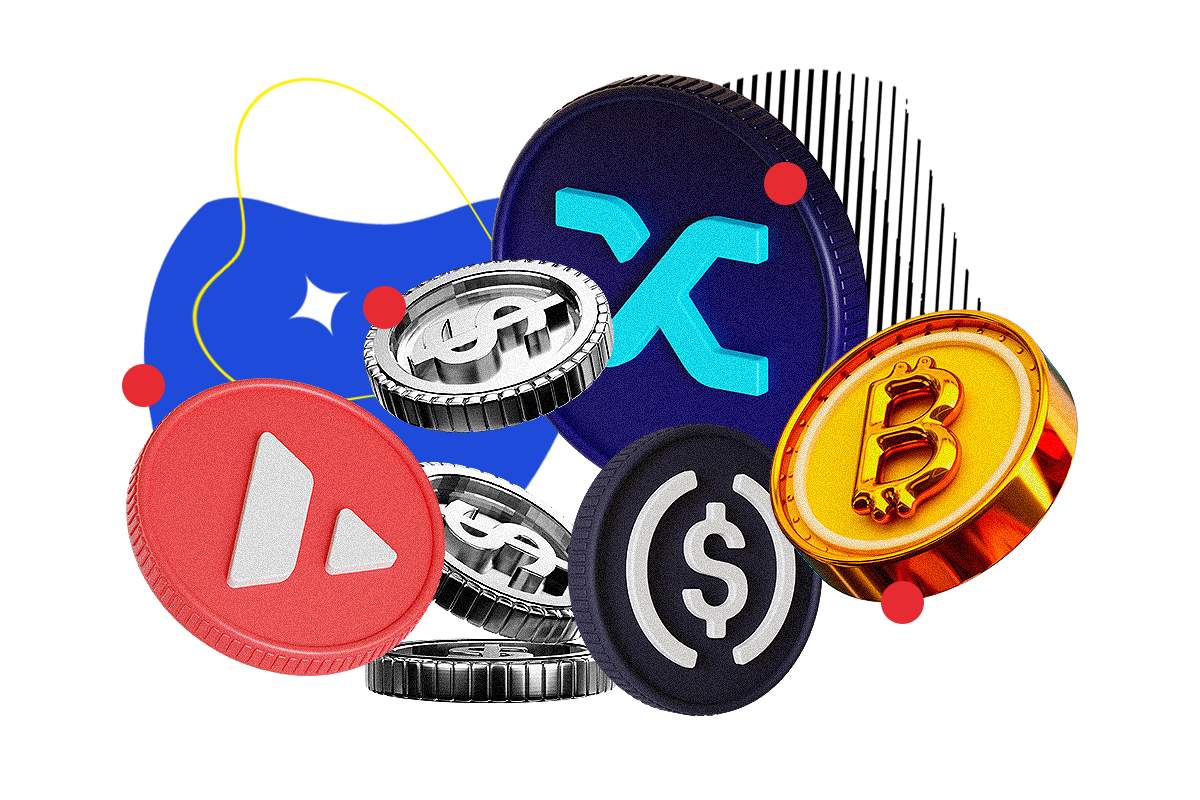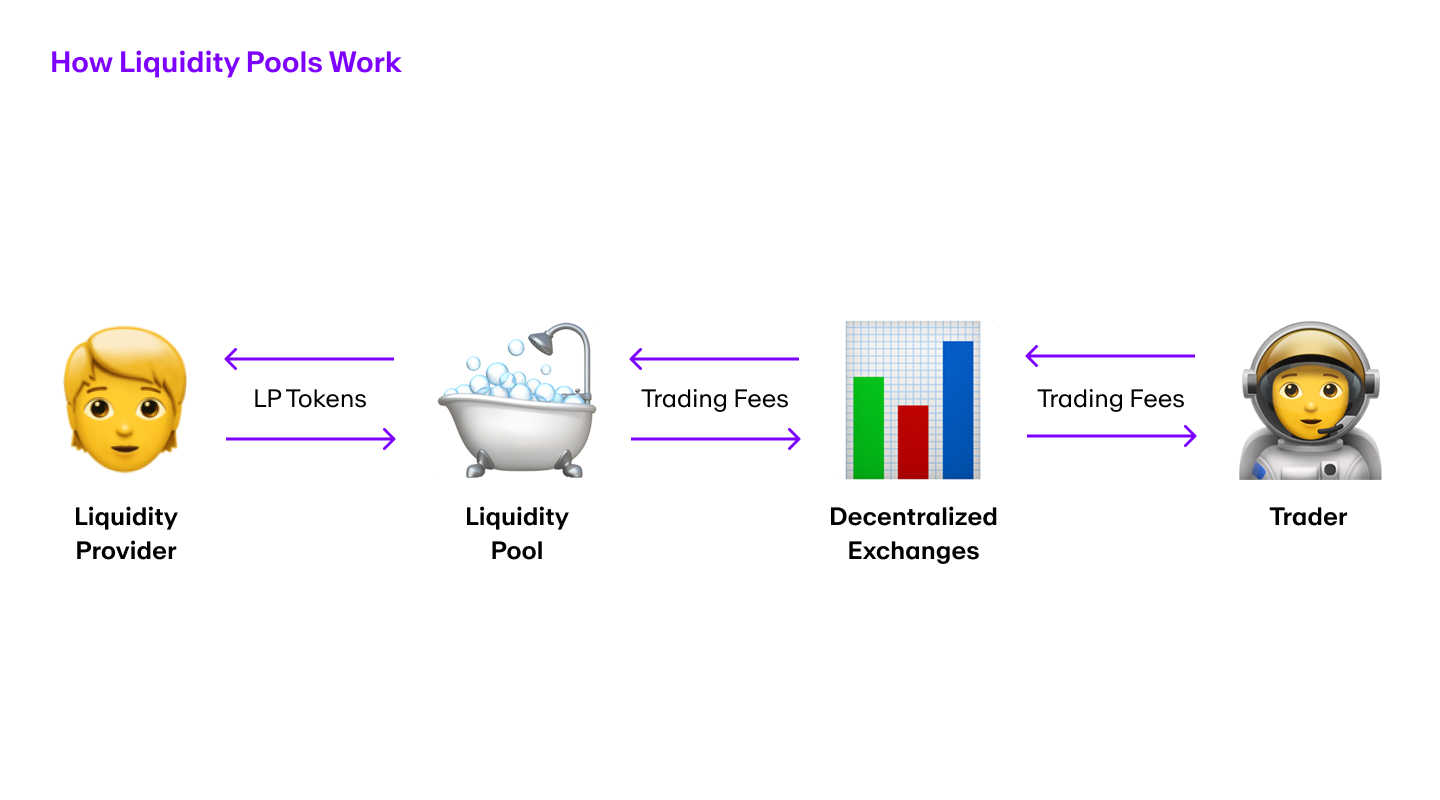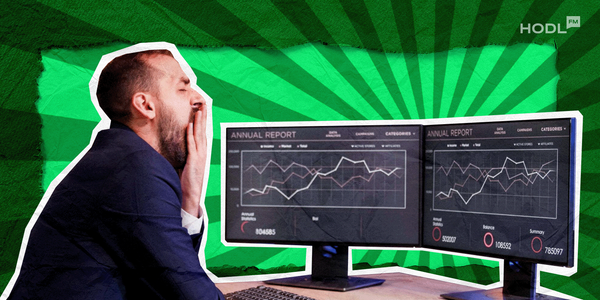Is it just me, or does DeFi grow too fast? No, it’s not just me, in fact, DeFi is expected to expand at a compound annual growth rate (CAGR) of 46.0% from 2023 to 2030. Not complaining or anything, but it can be hard to keep up with the pace.
Read more: Decentralized Finance (DeFi): Revolutionizing Traditional Financial Systems
In this new and innovative financial world DeFi, new instruments continue to emerge, transforming the way we interact with money and assets without the need for intermediaries. Among these, synthetic assets have gained significant traction lately. These brilliant little things called synthetic assets are quite similar to cyborgs. On one hand, they are your everyday tradable financial assets, like gold, or stocks. On the other hand, they live in a digital world, the cool decentralized ledger called blockchain. They have the potential to be bigger, better, and stronger than their TradFi counterparts. Let’s see how.

What are Synthetic Assets and How Do They Work?
Synthetic assets are financial derivatives that mimic the value of real-world assets, and by doing so, giving the chance to expose to derivative markets without holding the underlying asset itself. Is this a good thing? Absolutely it is. These financial instruments are created using smart contracts on blockchain networks. When an investor wants exposure to an asset but doesn’t want to own it physically, synthetic assets provide an effective solution. For instance, synthetic Tesla shares allow users to gain exposure to Tesla stocks’ price movements without actually holding the stock itself.
We must put our nerd glasses and get a bit technical to understand how they work, but here is the short version: Synthetic assets operate within the DeFi ecosystem by utilizing smart contracts on blockchain networks to create digital representations or derivatives of real-world assets. To create a synthetic asset, users lock a certain amount of collateral in a smart contract, and in return, the contract mints an equivalent value of the synthetic asset. Price oracles provide real-time price data, ensuring that the synthetic asset’s value mirrors the underlying asset’s price movements. When users want to exit their positions, they burn the synthetic asset, releasing their locked collateral.
Cool, right? But what is the benefit of using them? Isn’t buying the real thing better?
Read more: Understanding (ICOs): Opportunities, Risks, and Considerations
Advantages of Synthetic Assets in DeFi
I’d argue it is not better to buy the real thing. The advantages of synthetic assets in DeFi are many. Firstly, they enable greater liquidity and accessibility to a wider range of assets, including traditional assets like stocks, commodities, fiat currencies, and even crypto.
Secondly, they eliminate geographic barriers, enabling global investors to participate in DeFi markets without any restrictions. Believe it or not, derivatives market is not accessible as many would think.
Thirdly, synthetic assets can be traded 24/7, providing continuous access to various markets, thereby enhancing flexibility for investors.
On top of all that, by minimizing third-party involvement and empowering a decentralized, distributed architecture, synthetic assets help users gain exposure to a huge variety of real-world assets. Apart from simple market buying/selling and derivatives trading, synthetic assets create possibilities for seemingly infinite markets and combinations for new sources of value.
Last but not least, fractional shares are enabled by synthetic assets. Through tokenization, users can invest in real-world assets in very small fractions, allowing better portfolio diversification and maneuver capability with their investments.
Types of Synthetic Assets
The DeFi ecosystem offers a diverse range of synthetic assets. Some platforms offer inverse synthetic assets, which move in the opposite direction to the underlying asset’s price.
Others provide leveraged synthetic assets, amplifying the price movements for potential higher returns or losses.
Additionally, there are actively managed synthetic assets where the composition changes over time based on predefined strategies.
The popularity of decentralized synthetics can be attributed to several factors. One key driver is the ability to access assets that were previously out of reach due to regulatory restrictions or high entry barriers. DeFi’s permissionless nature empowers users to trade and invest without intermediaries, democratizing finance. Furthermore, the potential for high yields through liquidity provision and staking has attracted a surge of users seeking passive income.

Successful Projects Utilizing Synthetic Assets
Several DeFi projects have successfully leveraged synthetic assets to innovate and grow their ecosystems. Compound Finance‘s cTokens and Aave‘s aTokens are examples of interest-earning synthetic assets that have gained widespread adoption.
Other noteworthy platforms are:
Synthetix: A decentralized finance protocol that allows for the creation and trading of synthetic assets, collateralized by its native token, SNX, on the Ethereum blockchain, providing censorship-resistant access to a wide array of assets.
UMA: A platform that empowers any two parties to construct their own financial contracts on their terms using smart contracts and a “provably honest oracle” mechanism, aimed at increasing crypto adoption in the derivatives market.
Abra: Founded in 2014, it’s a pioneering decentralized investment platform that allows users to purchase, sell, and hold alternative cryptocurrencies by creating synthetic versions of them.
MakerDAO: This platform enables investors to use cryptocurrencies as collateral to gain exposure to the value of traditional assets, like the US dollar, through minting a synthetic asset called DAI, a stablecoin pegged to the US dollar’s value.
Liquidity Providers and Stakers
In the DeFi ecosystem, liquidity providers and stakers are the unsung heroes. They ensure that the or market goes on smoothly, even though they’re not directly in the spotlight.
Liquidity providers are the financial backbone of the DeFi markets. They deposit their assets into liquidity pools, which are essentially digital pots of money that fuel the engine of decentralized exchanges. By doing so, they enable swift and efficient asset conversion, preventing the dreaded roller coaster ride of sudden price fluctuations.
Liquidity providers also get to earn income from transaction fees, participate in governance, and use their pool for various use cases like minting synthetic assets or insurance.
On the other hand, we have the stakers, who are actively involved in maintaining the security and governance of the underlying DeFi protocols. By staking, which is the act of depositing or locking up their tokens, stakers help safeguard the network against malicious activities. But, their role isn’t just about security. They also get to have their say in how the protocol evolves, voting on proposals and upgrades. In a way, they’re like the unsung heroes of the DeFi world, ensuring the integrity, stability, and yes, even the democracy of the protocol.

Challenges and Risks
1. Regulatory concerns surrounding Synthetic Assets
As the DeFi space matures, regulatory scrutiny on synthetic assets is intensifying. Regulatory authorities worldwide are grappling with the novel complexities of DeFi and seeking to protect investors while fostering innovation. Compliance with different jurisdictions’ regulations poses a challenge for DeFi protocols and may require significant adjustments to ensure legal compliance.
2. Price oracles and their importance in maintaining accurate prices for Synthetics
Price oracles are a critical component of DeFi protocols, especially for synthetic assets. Oracles fetch real-world data and provide price information for assets outside the blockchain. Ensuring the accuracy and security of these oracles is crucial to maintain the integrity of synthetic asset prices, preventing manipulation or market distortions. Without the oracles, synthetic asset market would not be possible actually.
3. Risks associated with over-collateralization and under-collateralization
In the DeFi space, most synthetic assets are created through over-collateralization, where users lock more assets than the value of the synthetic asset they mint. While this reduces default risk, it can lead to capital inefficiency. Conversely, under-collateralization poses a risk of protocol insolvency if the synthetic assets’ value exceeds the collateral backing them.
The Future of Decentralized Synthetics
Let’s remember the benefits: Synthetic assets can enable fractional ownership of real-world assets, unlocking investment opportunities in otherwise illiquid markets like real estate and art. Additionally, they can facilitate hedging against traditional asset volatility, providing a risk management tool for investors.
As DeFi evolves, technological advancements will enhance the synthetic asset ecosystem. Cross-chain compatibility and interoperability will enable seamless asset transfers between different blockchain networks. Improved oracle solutions will ensure better price accuracy, reducing the risk of flash loan attacks and improving overall market stability. We’ll only get better as we learn from mistakes.
The future of decentralized synthetics in DeFi looks promising. As more traditional assets are tokenized and integrated into DeFi, the use of synthetic assets is expected to surge. Advancements in DeFi protocols, regulatory clarity, and mainstream adoption will foster greater investor confidence, driving the exponential growth of synthetic assets.
Read More:
- Crypto Slang 101: The Ultimate Guide
- Invisible Capes and Cyber Tattoos: Deciphering Decentralized Identity in the Blockchain Era
- Where to Store Your Crypto? Wallets vs. Exchanges
Synthetic assets have already revolutionized the DeFi landscape, most of us haven’t realized it yet. The growing popularity of decentralized synthetics signals a paradigm shift in the traditional financial sector too. As the industry matures, addressing regulatory challenges and enhancing price oracles will be crucial for long-term sustainability. With continued technological innovation, the transformative potential of decentralized synthetics is undeniable, and there is a lot to be excited about.

Disclaimer: All materials on this site are for informational purposes only. None of the material should be interpreted as investment advice. Please note that despite the nature of much of the material created and hosted on this website, HODL FM is not a financial reference resource and the opinions of authors and other contributors are their own and should not be taken as financial advice. If you require advice of this sort, HODL FM strongly recommends contacting a qualified industry professional.




